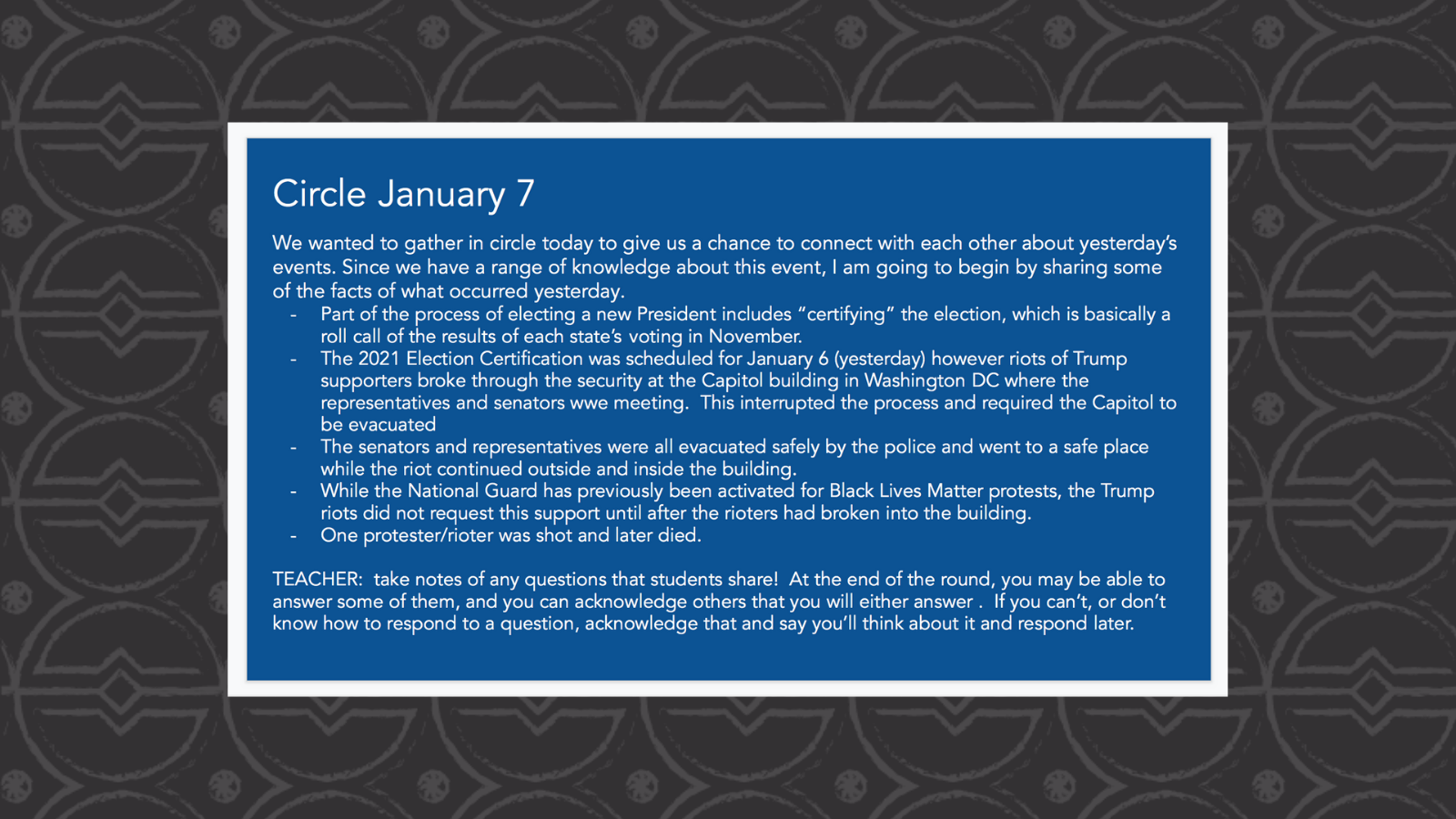12 Responsibility #3
Responsibility #3: Respond to crises and be proactive with cultural tensions.
As with many conversations about diversity and equity, poor handling can lead to misunderstanding, disagreement, and an end to dialogue. We encourage Equity Committees to help create a culture of dialogue and empathy by supporting the regular use of some of the dialogue and restorative tools below, not just after a crisis. By creating a culture of trust and listening from the beginning, schools can more easily address crises and tensions as (and even before) they occur.
In the video above, E4L’s Dr. Celeveland Hayes explains the importance of administration intentionally providing faculty, staff, and students the opportunity to respond to crises that may impact the school. Dr. Hayes also challenges the administration to use faculty meetings as a space to provide opportunities for deeper development around cultural identities from experts while also listening to student needs and providing them with space to b a part of these dicussions.
Collaborative Problem-Solving for Equity and Justice: A 6-Step Model
Source: EdChange
Equity researcher, Paul Gorski, offers a simple, six-step process for addressing conflicts and crises in schools related to diversity and equity.
Teaching on the Day After A Crisis
Source: Alex Shevrin Venet, Unconditional Learning
Education consultant, Alex Shevrin Venet, offers advice for teachers to reflect and plan as they enter the classroom the day after a crisis, whether national or local.
https://unconditionallearning.org/2021/01/07/teaching-on-the-day-after-a-crisis/?mc_cid=7e95b92b28&mc_eid=6b67b33fe2
Restorative Circles for Early Childhood, Elementary, and Secondary Grades
Source: Boston Public Schools
The Boston Public Schools offer three sets of slides (for early childhood, elementary, and secondary) to run a developmentally-appropriate restorative circle in your school after a crisis. Note: restorative circles are one technique used in restorative justice practice to build community and empathy after a challenging event, conflict, or disagreement. They are an alternative to traditional punitive or silencing measures.
Equity Committee Reflection Tool
The purpose of this reflection is to allow the Equity Committee to review their progression related to each section of the toolkit. Each committee must dedicate time to analyze and be transparent about triumphs, challenges, needs, goals, and more. The E4L team highly recommends spending time sharing reflections with designated members of the team to discuss findings and receive support in the form of feedback, suggestions, and resources.
Please review the following prompts as a team and collectively provide a response that encompasses the ideas of the Equity Committee at your school. We suggest taking notes each time your team meets to keep track of all efforts and completing the reflection sections each semester or academic yearbased on the time and availability of the entire team.
- What is the current state of the Equity Committee’s response to crises and cultural tensions?
- What goals does the Equity Committee have in place to respond to crises and cultural tensions?
- What is the current status of those goals?
- How does the team plan to reach these goals?
- What support do you need to achieve these goals? (Please identify if this support may come from in or outside your school, district, community or if E4L may provide support and resources to achieve these goals.)
- In what way can your Equity Committee improve related to this section?
- Please identify areas of achievement related to responding to crises and cultural tensions.
If you have any questions or comments the E4L team can review related to this section, please list them below.
Equity Committee Reflection #3 (Click to download)


